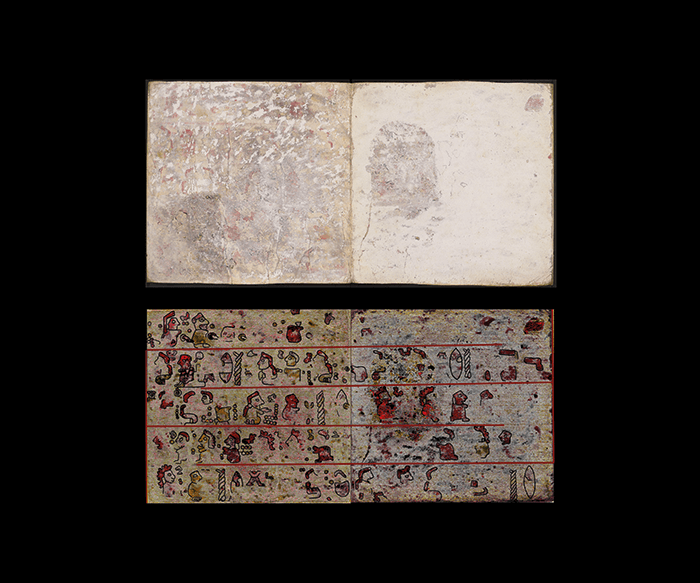The analysis of ancient texts – without causing irreparable damage – is often challenging. However, researchers working at Leiden University and the Bodleian Libraries have managed to unearth a layer of pictographic scenes hidden for 500 years from a Mesoamerican codex, suggesting that hyperspectral imaging may be the non-invasive key to analyzing these fragile texts.
According to Ludo Snijders, who worked on the project during his MA, the team’s main challenge was recovering organic lakes (pigments created by precipitating a dye with an inert binder) from underneath a layer of gesso paint, made of gypsum and chalk. Many analytical techniques could not be used because of the organic nature of the paint. “We applied a wide range of imaging techniques, including infrared and reflectance transformation imaging (RTI),” he says. “We tried one – photothermal tomography – based on the principle that the absorption of visible light causes production of heat. This same principle can be used to detect subsurface colors if your thermal camera is sensitive enough to detect the minute changes in temperature.” An issue that arose when they tried this on the original, however, was that the gesso turned out to be too porous, cracked, and delaminated. “The thermal energy produced by the subsurface absorption of light by the colors was not transmitted to the surface in any predictable way,” Snijders explains. “The only results we got were a series of uninterpretable blobs.” Eventually the team hit on a technique better suited for this process – hyperspectral imaging spectroscopy (HIS), which generates a high number of spectral bands for each pixel of an image. “With this technique, we were able to reveal parts of the drawing hidden under the surface, and while we are not yet able to interpret these images completely we can already say that this subsurface text is different than any of the known texts,” says Snijders. “This is significant considering there are less than twenty precolonial Mesoamerican codices left in the entire world – and from the Mixtec area, where the codex was sourced, the number of books is as low as five. Thus, the recovery of even fragments of new text is very exciting!”

So far 15 pages have been analyzed. The team is currently working on the interpretation of the scan results, and trying to see if more of the text can be reconstructed by comparing it with the known narrative found in other codices from similar geographic regions. At the same time, they are looking into the best way to present the data online for other researchers. “The problem is that each scan made with hyperspectral imaging is tens of Gigabytes of raw data,” says Snijders. “Each page of the document required five scans and we scanned 15 pages, so you can imagine the amount of data we have to deal with!” Whatever the solution to presenting the findings, the team is adamant about giving descendant communities in Mexico access to their cultural heritage.
References
- L Snijders et al., “Using hyperspectral imaging to reveal hidden precolonial Mesoamerican codex”, J Archaeo. Sci, 9, 143-149 (2016).




